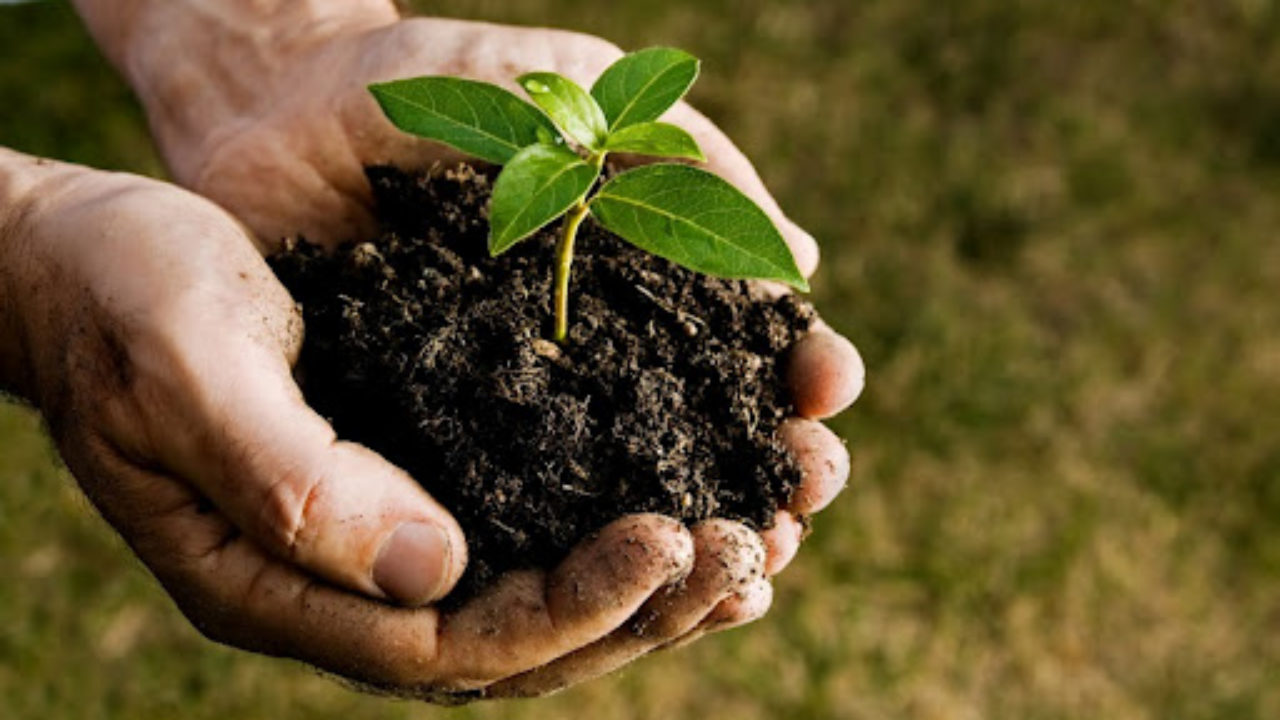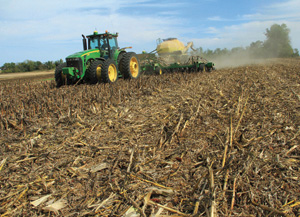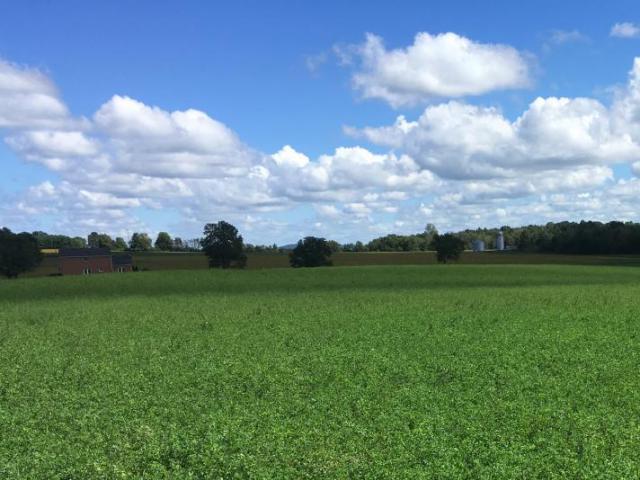
Hay bales in the field
Livestock owners feeding forage need to keep in mind the potential for some forage toxicities and other problems that can develop this fall. High nitrates and prussic acid poisoning are the main potential concerns. These are primarily an issue with annual forages and several weed species, but nitrates can be an issue even in drought-stressed perennial forages. There is also an increased risk of bloat when grazing legumes after a frost.
Nitrate Toxicity
Drought-stressed forages can accumulate toxic nitrate levels. This can occur in many different forage species, including both annuals and perennials. Several areas in Ohio have been dry of late. Corn, oat, and other small grains, sudangrass, and sorghum-sudangrass, and many weed species including johnsongrass can accumulate toxic levels of nitrates. Even alfalfa can accumulate toxic nitrate levels under severe drought stress.
Before feeding or grazing drought-stressed forage, send in a forage sample to be tested for nitrates. Most labs now offer nitrate tests, so it is likely that you can get a forage nitrate test by your favorite lab. Several labs are listed at the end of this article that does nitrate testing. This list is for your convenience and no labs are intentionally omitted. Check your chosen lab’s website or call them and follow their specific instructions about how to collect and handle the sample. The cost is well worth it against the risk of losing animals.
See the following references for more details:
Nitrates in Cattle Sheep and Goats (University of Wisconsin Extension) https://fyi.extension.wisc.edu/forage/nitrate-poisoning-in-cattle-sheep-and-goats/
Nitrates and Prussic Acid in Forages (Texas Cooperative Extension) http://forages.tamu.edu/PDF/Nitrate.pdf
Nitrate accumulation in frosted forages. Freezing damage slows down metabolism in all plants, and this might result in nitrate accumulation in plants that are still growing, especially grasses like oats and other small grains, millet, and sudangrass. This build-up usually is not hazardous to grazing animals, but green chop or hay cut right after a freeze can be more dangerous. When in doubt, test the forage for nitrates before grazing or feeding it. Continue reading Precautions for Feeding Frosted and Drought-Stressed Forages →






 “What are the right decisions for phosphorus management in crop production that reduce water quality impacts?” is a common question I have from farmers looking to improve yield yet are concerned about downstream water quality impacts of phosphorus.
“What are the right decisions for phosphorus management in crop production that reduce water quality impacts?” is a common question I have from farmers looking to improve yield yet are concerned about downstream water quality impacts of phosphorus. By Mark Sulc, OSU
By Mark Sulc, OSU By Mark Loux, OSU
By Mark Loux, OSU Private Pesticide and Fertilizer Recertification Opportunities Online
Private Pesticide and Fertilizer Recertification Opportunities Online






